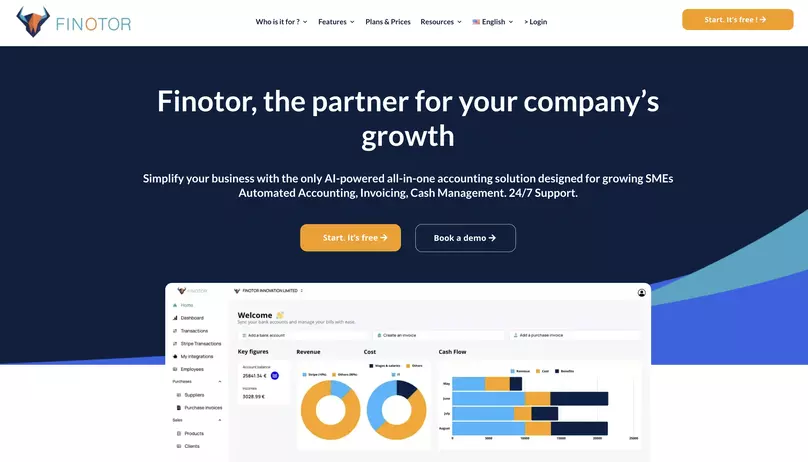Contents
Analyzing the profitability of a company is a crucial aspect of financial management, as it allows business owners and investors to evaluate the performance of the company’s resources and determine whether the business is achieving its financial objectives. Profitability analysis involves comparing the results achieved to the capital invested to achieve them.
Therefore, it is essential to ask the right questions to assess whether the company is efficiently using its resources and providing a satisfactory return to its shareholders. In this article, we will outline a structured plan for analyzing the profitability of your business, including identifying the economic means used by the company, evaluating the age and renewal of its assets, assessing the need for working capital, and calculating economic profitability.
By following this plan, you can gain a comprehensive understanding of your company’s financial performance and make informed decisions about its future growth and development.
Profitability measures a performance in relation to the means used. It is therefore a question of comparing a result to the capital invested to obtain it.
– What are the right questions to ask?
– Is the company using the resources at its disposal efficiently?
– Do the shareholders benefit from a satisfactory rate of return?
– Is the company using leverage positively?
– Are the fixed assets regularly renewed?
Calculate and analyze the profitability of your company
Identify the means
It is a question of determining the economic means used by the company, namely :
– fixed assets ;
– the need for operating working capital.
– Fixed assets
At this stage, it may be interesting to evaluate the state of obsolescence of the production tool. This information can be particularly useful in determining the future financing needs required for the renewal of equipment.
The following ratios are used to measure the average age of fixed assets The ratio of net fixed assets to gross fixed assets. If this ratio is close to zero, it indicates an old asset base.
The comparison of the depreciation allowance with the amount of investments also allows us to judge the rate of renewal of fixed assets: a ratio close to 1 indicates a satisfactory rate.
Working capital requirements (WCR)
The operations (purchases, production, sales…) give rise to real flows (or physical flows): delivery of goods, supply of work…. The counterpart of these real flows is made up of monetary flows. The time lag between the real flows and the monetary flows gives rise to receivables and payables.
The operation thus gives rise to financing needs but also to financing resources. Generally, the needs exceed the resources, this is what is called the working capital requirement.
This indicator is of paramount importance in financial management because it can generate significant cash flow needs that can sometimes lead to a suspension of payments.
The study of the working capital requirement is therefore an essential step in the financial audit.
In accounting terms, the working capital requirement is calculated as follows Inventories + Trade receivables + Other operating assets – Trade payables – Other operating liabilities.
Other operating assets” include VAT receivables, prepaid expenses, other operating receivables, etc.
Other operating liabilities” include, among others, tax and social security liabilities, deferred income, other operating liabilities, etc.
In practice, the following calculations will be used:
- The operating working capital requirement (or WCR) in absolute value;
- The working capital requirement in number of days of sales;
- The evolution of the global BFRE over time and in relation to the sector;
- The breakdown of the operating working capital by components, which are: the inventory turnover ratio, the customer credit ratio and the supplier credit ratio.
Calculation of the economic profitability
The principle: this consists in measuring the performance achieved by the company in the implementation of the means put at its disposal. From this point of view, the method of financing these resources (own funds or borrowed funds) is not taken into consideration. The performance indicator will therefore be the result before financial charges.
The method of calculation: if the gross value of fixed and current assets is used as the means of calculation, the indicator of results will be the EBITDA (Gross Operating Profit). On the other hand, if we reason in net values, we will use the operating result.
We can reason before or after tax. In summary, economic profitability (before tax) can be measured by one of the following ratios:
Gross economic profitability: EBITDA / Gross economic means
Net economic profitability : RE / Net economic means
Explaining and interpreting financial profitability
Here again, more than the ratio in absolute value, the important thing to remember is the evolution of the profitability over time and the comparison with the competition. A more detailed analysis of the economic profitability can be made by breaking down the following ratio: ROE / Economic Means x ROE / Sales x Sales / Economic Means.
This breakdown has the advantage of highlighting the different factors of profitability, namely
the operating margin, which reflects the operational efficiency ;
- The asset turnover rate (sales / economic resources).
- This last ratio measures the capital intensity of the company and the efficiency in the use of assets or, in other words, how much revenue each euro invested generates: a high ratio will therefore be a sign of good operational efficiency.
Calculating financial profitability
Also called “return on equity”, financial profitability consists in measuring the return on the shareholder’s investment.
In practice, it is a matter of relating net income to shareholders’ equity. It does not matter whether the result is distributed in the form of dividends or transferred to reserves; in both cases, it belongs entirely to the shareholder and increases the assets.
The capital invested is the shareholders’ equity (i.e. the funds originally invested by the shareholders plus the profits set aside year after year).
To summarize, financial profitability (after tax) is calculated as follows Net income / Shareholders’ equity (excluding income for the year.
Leverage effect
Financial profitability is closely linked to economic profitability. Indeed, as shown in the example below, profitability is a function of three parameters:
the economic profitability ;
the cost of debt ;
the level of indebtedness.
Example
1/ Economic means (uses):
Fixed assets: 40
EBITDA: 40
Total: 80
2/ Financing (resources):
Equity: 50
Financial debt: 30
Total: 80
3/ Income statement:
Operating income: 12
Financial expenses: 3
Income before tax : 9
INCOME TAX : 3
Net income: 6
The economic profitability will therefore be: 12/80 = 15% or 10% after tax.
The financial profitability will be 6 / 30 = 12% (after tax).
In this case, financial profitability exceeds economic profitability, so there is a positive leverage effect. In other words, the financial profitability is equal to : Economic profitability + (Economic profitability – Cost of debt) x Debt / Equity = 10% + (10% – 6.6%) x 30/50 = 12%.
In fact, the cost of debt is equal to : (Financial costs / Financial debt) x (1 – IS rate) = 3 / 30 x (1 – 33.33%) = 6.66%.
In this example, we conclude that the shareholders benefit fully from the leverage effect: the company generates a profitability of 10% of which only 6.66% is passed on to the lenders. The difference (weighted by the weight of the debt to equity ratio) goes entirely to the shareholders. The leverage effect can, in certain situations, play a negative role (the “sledgehammer effect”); this phenomenon is observed when the cost of debt exceeds the economic profitability of the company. In this situation, it is the shareholders who bear the cost.
When used properly, leverage can “boost” profitability for the shareholder. However, it is a risk factor when the use of debt becomes excessive.
Conclusion
This article explains the importance of analyzing the profitability of a company by evaluating the economic resources it uses. Profitability is defined as the performance measured in relation to the resources used, such as fixed assets and operating working capital.
To calculate economic profitability, the performance indicator can be the result before financial charges using the gross value of fixed operating and current assets or the net value.
This analysis is essential to evaluate the company’s performance and compare it with its competitors. The article also emphasizes the importance of studying the working capital requirement, which can generate significant cash flow requirements.
The evaluation of the average age of the fixed assets is also an important element to take into account in order to determine the future financing needs required for the renewal of the fleet. In short, the analysis of the company’s profitability is a key step in the financial audit.









